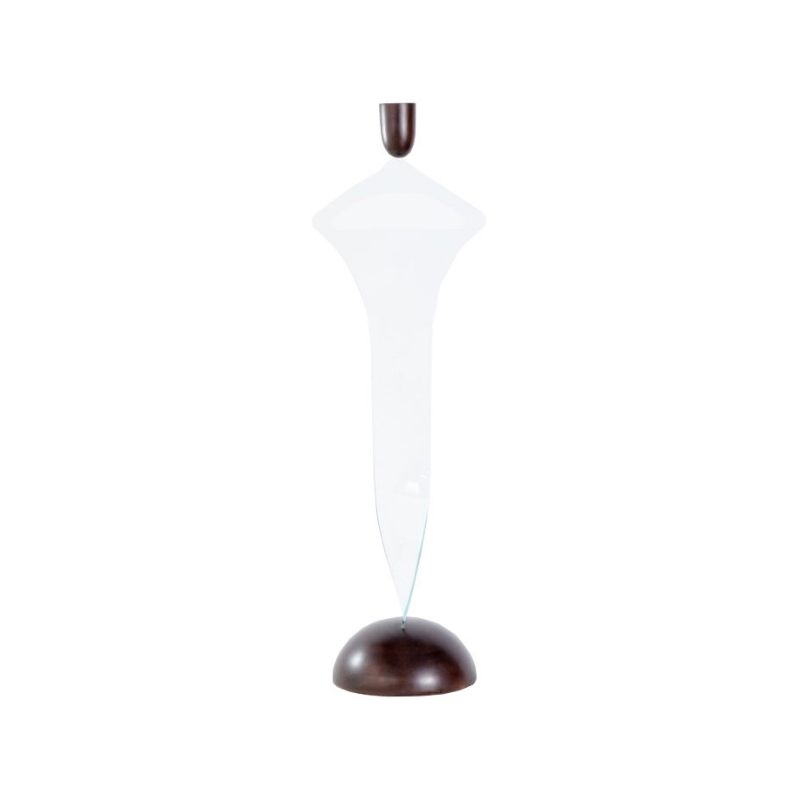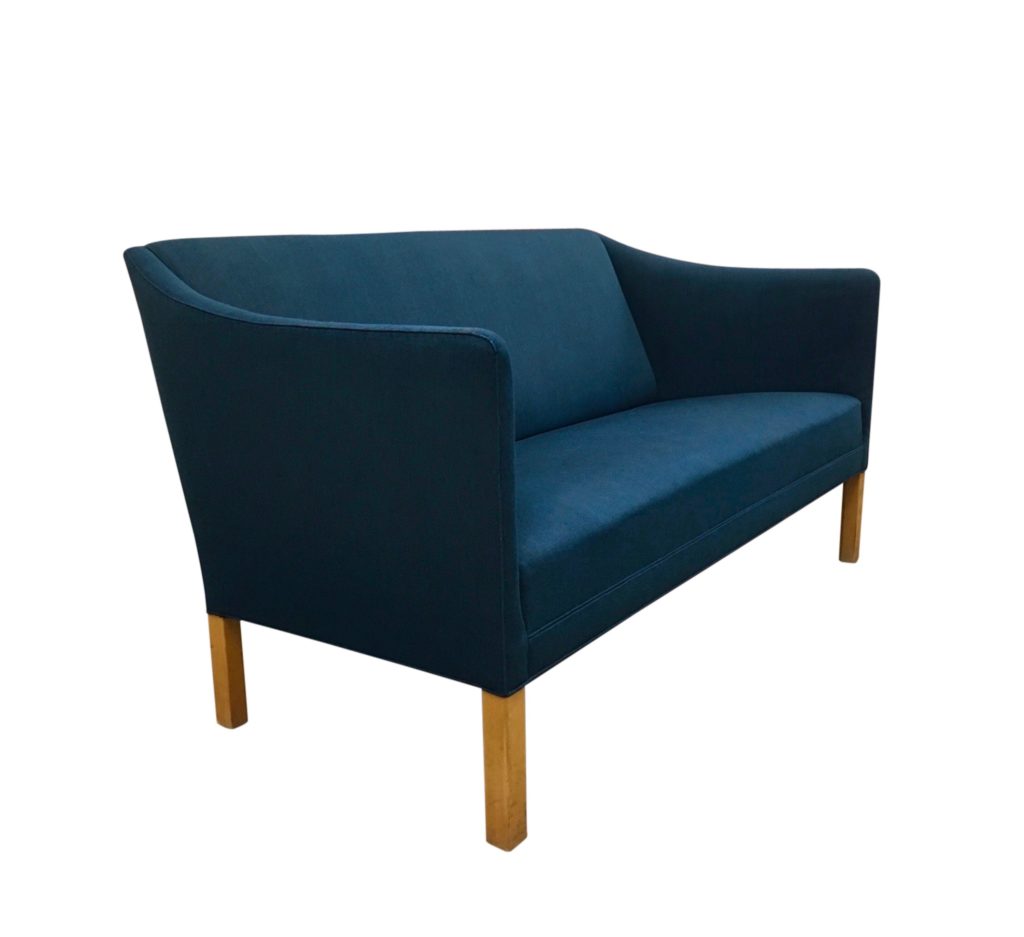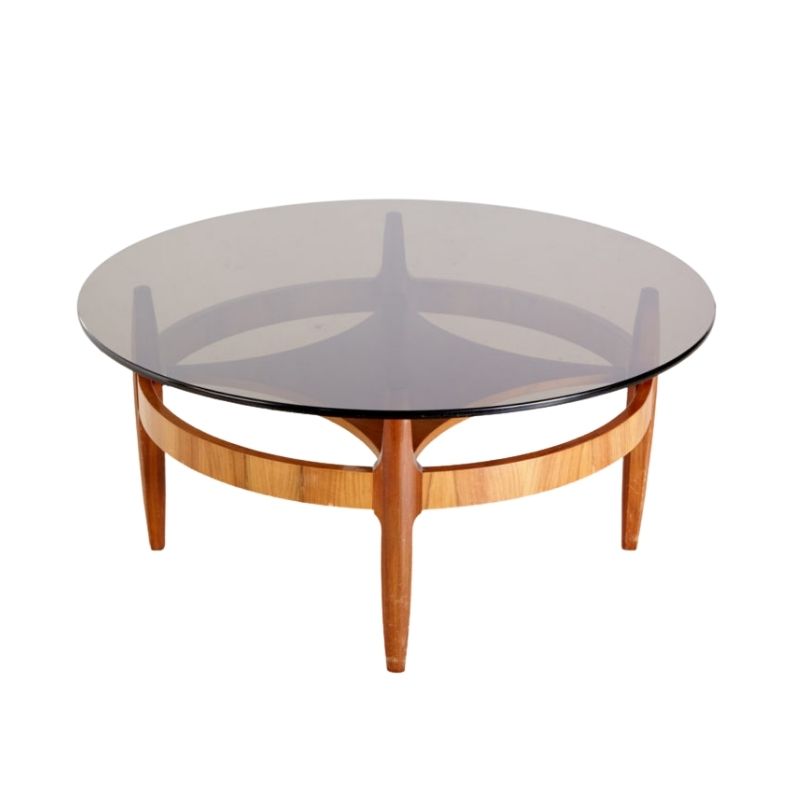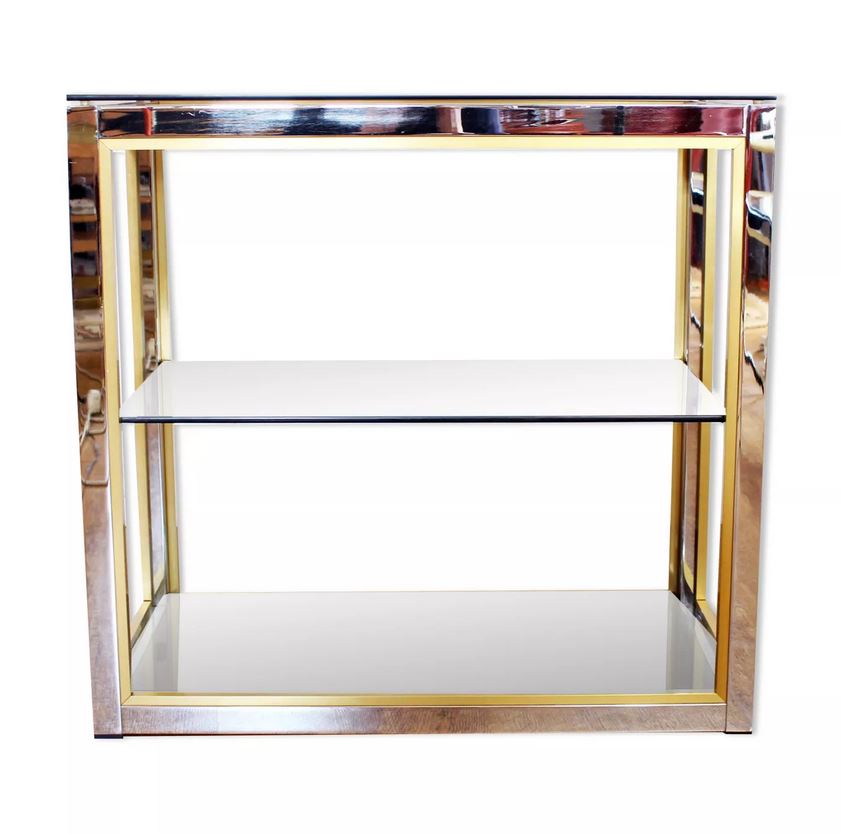This is my first post in a forum that has been incredibly informative and helpful to me in the past. Thanks so much for any assistance in advance.
I am attempting to reupholster a Ib Kofod Larsen Seal chair that came to me without any fabric, foam, or pattern whatsoever. I have done significant image research but am at a loss in regards to a few items before I can attempt to build a pattern.
If anyone here has ever reupholstered a Seal chair, I would be grateful for pointers.
The seat cushion -
Do all Seal chairs have molded latex seat cushions or spring coil? From images it looks to me that the cushions are up to 5 inches thick, so I wonder if it's spring coil...
The back -
The bones came with an additional inner cardboard shell that once had the back foam attached to it. I can tell that the foam was pieced so that the lumbar area was a standard poly foam (1"?), everything else was latex (+1"?). The cardboard was stapled to the back with a spacer so that there is significant space between the actual back shell and the cardboard. I haven't seen this before. Would there have been horsehair or cotton padding in between these two layers?
The back side -
It looks like the leather is wrapped around the front side and stapled around the edge of the back. Is the back piece attached with plygrip over thin welt? Hand sewn?? I see glue marks on the outer side of the wood, but wonder if there was any kind of padding, or if the leather was just glued and stretched directly over the wood.
The small padded arm rests -
I imagine there was 1/2" - 1" foam on these, with leather folded over and under, and stapled underneath?
The seam connecting arms and back rest -
any advice on the curves of this seam would be greatly appreciated.
Thanks!!
I own a Seal chair that I got from the family of the original purchaser, who bought it at Illums Bolighus during a world cruise back in the 1950's. The upholstery fabric on mine is all original, and is a wool fabric somewhat similar to Hallingdal, but the weave is not quite as tight as Hallingdal. The seat cushion is sprung, with batting only as the padding. There is no foam in the seat cushion. My chair might be early enough to pre-date foam's use. I do not sense the presence of any foam in the chair, and I do not see how it possibly could have latex, as it would have gone solid by now, or crumbled. My sense is that the entire chair is padded with batting or some other natural cushioning. It is not an especially heavily padded chair to begin with. In any case, the upholstery on my chair is still entirely serviceable.
I have seen the chairs upholstered with what looks like a quite thick seat cushion. I am not of the mind that this is correct, unless it was a later development. My seat cushion has a welt, and the strip of the fabric on the cushion sides measures 3 1/8", not including any of the welt piping. So, it is nowhere near 5". I believe this 3 1/8" dimension would be different if a welt is not used.
pincore, you mentioned "small covered armrests" but none of the photos online of the Kofod-Larsen seal chair show covered armrests. Can you post photos of your chair? As long as you're at it, a photo from each angle would be great. I have never upholsetered a Seal chair but I've redone a bunch of different Danish chairs with curved shells like this and might be able to help.
"I believe this 3 1/8" dimension would be different if a welt is not used."
If there is a difference, it would be negligible and would have more to do with the bulkiness of the upholstery fabric. I would just settle on a finished cushion thickness and the fabric and work out the math from there.
Thank you so much for all your feedback on the seat cushion. I'm attaching several photos of the chair and the shell itself with the inside cardboard piece.
I misspoke when I described the pieces that overlap the wooden frame as "small padded armrests." With this I meant to describe the upholstered edges that "fold" over the teak frame, but are below the teak armrests.
I do think that the chair had previously been done in latex (I can still see the circles from the dried-up pincore), so I am thinking it may be a copy or a newer product, perhaps by Brdr, Pedersens, as theirs also look to have just a slight visible edge at the lumbar area from an additional supporting layer.


I think that if this chair had latex originally the chair was made later than mine was perhaps, but I doubt it is a copy, and Bdrs Petersens has probably only been making the chair for a few years now. That chair looks quite old. The only marking these chairs ever had was either the OPE fabric label on the chair itself, or an Illums Bolighus metal tag, as mine has.
Since my chair is fabric, I am not sure it compares to the methods used for leather. My back fabric is hand stitched with what I assume is a ladder stitch.
I am guessing you are RD and that this is the chair from TGM. If you want to look at my chair to take measurements, etc., I am sure that could be arranged, but you would have to come down to the Sellwood area. My chair is a high back version, but I think that is the only variation, with all other elements being the same.
Do you have upholstery experience already? Looks like it, if that's your shop!
1. I don't think the leather or fabric was glued directly to the plywood over the back of the chair. More likely, a thin layer of padding was glued to the plywod and the fabric just laid on top of that. It isn't necessary to adhere the fabric to the batting or whatever on an outside curve like this. It will be held in place securely around the entire perimeter of the piece. As for the padding, 1/4" foam or very thin poly or bonded cotton batting is all you need. It has to lie perfectly smoothly.
2. That looks like a whole lotta staple or tack holes for one upholstery job--i'm thinking it was redone at least once and who knows how the redo was attached. I would just hand sew all of it, but I'm biased towards hand sewn edges (I also like doing them!) I think Plygrip is fine in a lot of applications but I haven't seen it much on original Danish upholstery. I have seen a lot of hand stitching, though.
3. I don't know what that inner shell of cardboard could be---maybe just to give the back more thickness at the bottom than the top? Yeah, i think that may be it. The only other way to get those dimensions is with padding and it would be hard to get a perfect tapering off from thick to thin with foam. Much easier to do it this way and then just add one piece of thin foam over the entire inside back.
4. Do get latex foam if you can. It is available, it's just more expensive than urethane foam. SO much more comfortable, though.
5. You can figure out the inside arm/back seam placements by laying a piece of string on the frame and comparing the placement to photos of the chair online. That's how I'd do it, anyway.
6. I wouldn't bother with making a pattern, either...just drape the fabric on the inside of the chair when the padding is all in place, and cut it big. Do the same for the back, then trim both as you go. If you're not comfortable doing that, then at least get some muslin or something for the pattern and do it the same way. Paper won't behave anything like fabric on all those curved surfaces and will just be an exercise in frustration.
7. Not sure how the sides are finished off, but I'm guessing the inside arm fabric curves over the top and is sewn to the outside back/side fabric (all one piece, i'm pretty sure) just under the edge.
Are you going to do fabric or leather? I vote fabric. In fact, I vote Maharam/Kvadrat "Tonus". It's beautiful.
This is probably enough for now but I will think of more later, I'm sure!
tchp, not that I have any experience with good vintage Seal copies, but last year I did come across some good Elizabeth copies made in Germany. So you never know ...
http://www.designaddict.com/forum/Identification/Elizabeth-Chair-Kofod-L...
Edit: pincore, can I request you adding these photos to the newly created skeleton thread? It would be a fine addition.
cdsilva,
A while back a pair of chairs was listed on Ebay as Seal chairs, with a pretty high asking price. The arms were the wrong shape, and the legs a little too fat, and other details with the seat bucket shape, etc. were wrong. I think the chairs were definitely inspired by the Seal chair though. I think that the German Elizabeth chairs fall into a similar category, where they show plenty of inspiration from the originals, but still have quite a few details that do not let them pass for the real thing.
Ultimately, since the point of a good fake is that one not be able to tell it is fake, it is hard to know how many are out there... but I suspect that few pieces had the kind of value in years past that would warrant the investment of money and effort to make a truly faithful counterfeit version of them. I could be wrong of course...

Thank you for these incredibly helpful comments and tips. I do have upholstery experience and tchp is right, that's where I work. A passion for detective work is what brings us all here, I guess! 🙂
As it's going to be in leather I am a bit hesitant to do a ladder stitch along the entire outer edge. Challenging to get that even, to say the least...
I will use latex, probably 1" throughout the inner back and maybe another 1/2" poly foam in the lumbar area. 1/4" on the outer back, thanks for the suggestion, spanky!
One interesting challenge I am encountering is how and where to attach the inner back piece to the seat. There are hardly any staple holes visible in the middle, which makes me think that the fabric was stapled on the wooden spacer piece that the cardboard is attached to (I made a makeshift one, as this was missing as well). This is interesting as I'd have to wrap the leather under and staple to the spacer before attaching anything else, then slide it in place, staple down the edges of the cardboard, and wrap the leather over the upper edge. But this just seems weird/wrong. Thoughts?
TCHP, I would love a chance to take a look at your high back version. Can you get in touch with me?(6178184932)

After looking at my chair more critically, I believe I probably am wrong about there not being foam in the upholstery, as the seat back cushioning feels a bit too resilient and springy for it to not be foam. I am still thinking it is probably not latex foam however, since I would not expect latex foam to last this long.
If you need any help, please contact us at – info@designaddict.com









